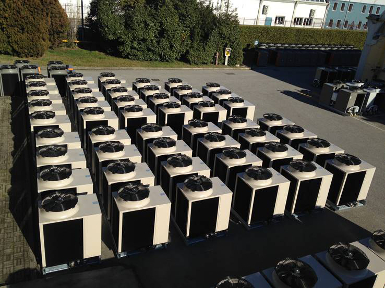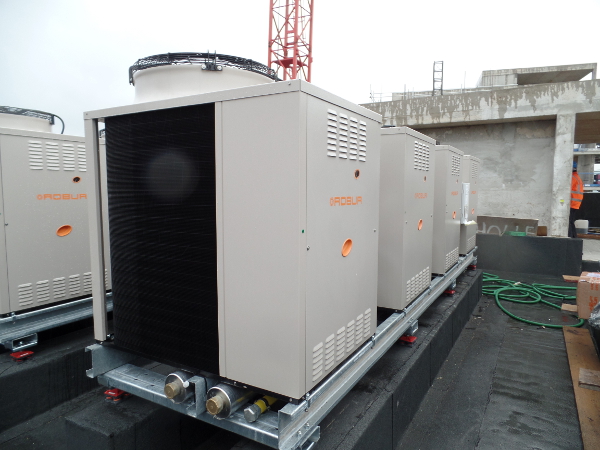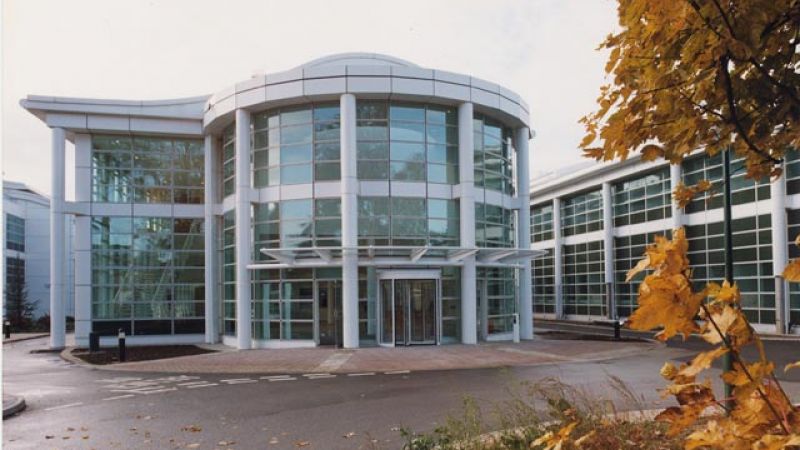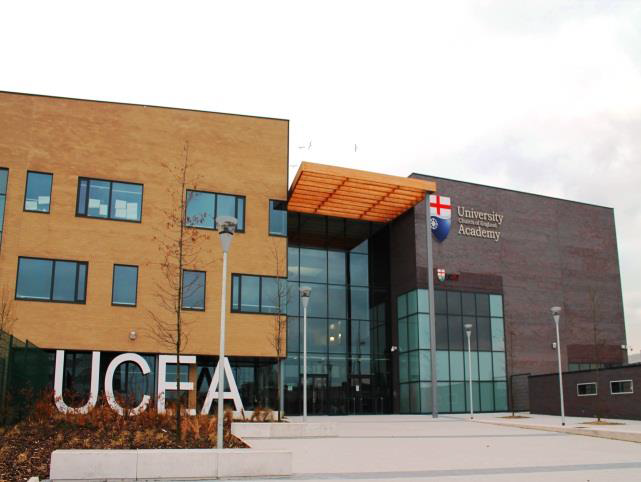Embassy Gardens, Nine Elms, London
Fifty Robur gas-powered chillers provide comfort cooling for the residents of Embassy Gardens, the regenerative development at Nine Elms.
The 17 acre site incorporates the refurbishment of Battersea Power Station, the New Covent Garden market and US Embassy. Wrapped around these iconic landmarks, Ballymore Group is building commercial, retail and residential properties.
Project details
Installation of Robur gas absorption chillers, delivering cooling to residential apartments.
| Client | Ballymore Group |
| Consultant | OSCS Consulting Engineeers |
| Installer | Haydon Mechanical Services |
| Supplier | ESS Ltd |
The solution
More than a megawatt of cooling was required for Phase 1 of the residential build of 510 riverside apartments, and faced with a shortage of electrical power and the cost of providing the necessary power, Robur’s gas-powered absorption chillers were chosen. These are mounted in factory assembled “skids” of 90kW output, with 15-18 chillers on each of the three apartment blocks.
The outcomes
Selected by OCSC Consulting Engineers on behalf of Ballymore Group and installed by Haydon Mechanical Services, this provides a truly modular solution. The DDC controls ensure shared workload and, in the event of a mechanical failure or service downtime, less than 7% of output is lost. With no compressor and fewer mechanical and electrical parts, gas absorption chillers and heat pumps have a life expectancy of 25-30 years, in excess of electrically powered heat pumps such as VRF. Utilising an hfc-free refrigerant, ammonia, in a factory sealed circuit, gains BREEAM credits and provides exemption from F-Gas regulations.
Robur gas chillers use natural refrigerant in a factory sealed circuit and are not subject to F-Gas regulation. Moreover, thanks to an almost static refrigeration cycle, the performance levels remain unchanged over time.
Kevin Pacey, Managing Director of ESS Ltd., said, “The Robur gas powered chillers provide a truly modular solution. The direct digital controls ensure shared workload and, in the event of a mechanical failure or service downtime, less than 7% of output is lost.”








